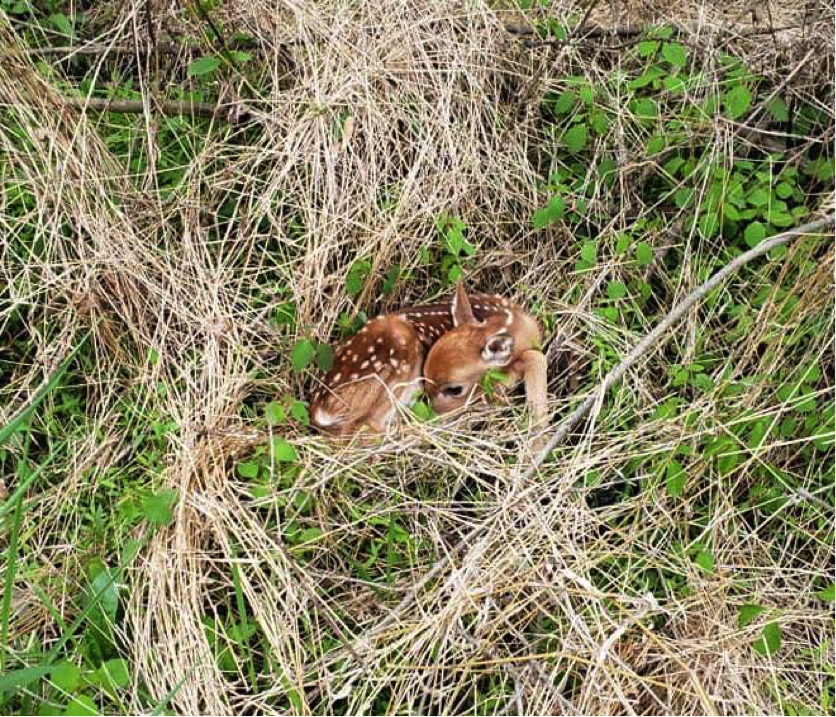It’s a fairly common scenario: A leisurely walk through the woods turns into a wildlife rescue mission when a well-intentioned human spots a baby animal all by its lonesome. In reality, not every solitary creature is injured or orphaned!
Fawns and baby bunnies, for instance, are often left alone by their mothers as they go off to feed. The only option that these adorable and vulnerable creatures have is to be still and silent as they wait for their parents to return; unfortunately, many a kindhearted human stumbles upon this sight and immediately tries to come to the rescue. Most of the time, this “help” does more harm than good.
There are ways to tell if a creature is truly in need of your assistance. According to the Humane Society, a wild animal should be helped if:
● It is shivering, bleeding, or crying and wandering around for hours
● Your cat or dog has brought it to you
● It clearly has an injury, such as a broken limb
● There is a dead parent nearby
● It is a featherless bird on the ground
In these cases, it may be best to take the animal to a wildlife rehabilitation center such as AARK in Chalfont so the professionals can properly care for them–but proceed with caution! Some animals are at greater risk for contracting rabies and should be not handled without protection. Examples of Rabies Vector Species (RVS) include raccoons, groundhogs, foxes, bats, skunks, and coyotes. Do not touch or transport these animals without gloves, preferably disposable ones that can be thrown out after use. Better yet, contact the professionals to do it for you.
The next time you’re out enjoying a walk in a park or nature preserve, keep these facts in mind! It could mean the difference between saving wildlife in need or endangering a perfectly safe and healthy baby animal.
